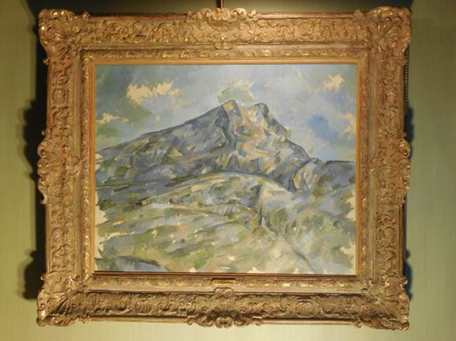Analysis
Secret $100 Million Cézanne Sale in Detroit


Sarah Cascone

While Detroit was scrambling last year to find a bankruptcy exit plan that allowed the Detroit Institute of Arts to keep its world-class art collection, the Edsel & Eleanor Ford House of nearby Grosse Pointe Shores, Michigan, was quietly selling a masterpiece of its own, Paul Cézanne’s La Montagne Sainte-Victoire vue du bosquet du Château Noir (1904), for an astronomical $100 million.
The details of the deaccessioning, as per the Detroit Free Press, were kept under wraps as the city’s contentious bankruptcy proceedings unfolded, so as to not bolster the case for creditors looking to reject the “Grand Bargain” and monetize the DIA collection (see “Detroit Institute of Arts Will Contribute $100 Million to Fund City Pensions“). Neither museums or historic homes are allowed to use the sale of art to cover operating expenses or to pay off debt.
Although some decry the loss of a major publicly-owned Impressionist work to an anonymous private collection where it will be seen by a select few, the Ford House sale is not a violation of historic home ethical standards, which are much more lenient than those that govern museums (see “Delaware Museum Warned of “Serious Violation” in Selling Artworks,” “Virginia’s Maier Museum of Art Sanctioned for Selling George Bellows Painting,” and “St. Louis Society Criticized for Pre-Columbian Auction“). The organization is using the proceeds of the sale to create an endowment to preserve, conserve, and restore its collection.
The Ford House turned down two lower offers before agreeing to part ways with the picture, Ford House president Kathleen Mullins told the Detroit Free Press, adding that “this was really a once-in-a-lifetime offer,” seen as “a way to guarantee the estate would be taken care of the way Eleanor would have wanted.” Like most of the other paintings on display at the home, the Cézanne will henceforth be replaced with a copy.
News of the blockbuster sale is sure to add to the anticipation already building for the February sale of Cézanne’s Vue sur L’Estaque et Le Château d’If (1883–85), set to be held at Christie’s London (see “Cézanne from the Courtauld Collection Heads to Christie’s“). A landscape featuring a French fishing village, the canvas is already expected to outstrip its pre-sale estimate of £8–12 million ($12.6–18.9 million). Cézanne already holds the record for the most expensive painting ever sold: that would be The Card Players, purchased by the royal family of Qatar in 2011 for upwards of $259 million, although the exact price was never released. With the Ford House sale, the artist now has two works that among the select group of around 15 paintings that have sold for over $100 million.
Cézanne has also been in the news of late thanks to the blockbuster exhibition at New York’s Metropolitan Museum of Art, “Madame Cézanne,” an homage to the artist’s favorite subject, his wife Hoertense Fiquet (see “Who Was Cézanne’s Enigmatic Wife?“). Earlier this year, an online version of the artist’s catalogue raisonné was compiled and published by David Nash, co-owner of New York’s Mitchell-Ines & Nash Gallery (see “Cézanne’s Entire Oeuvre Goes Digital“).